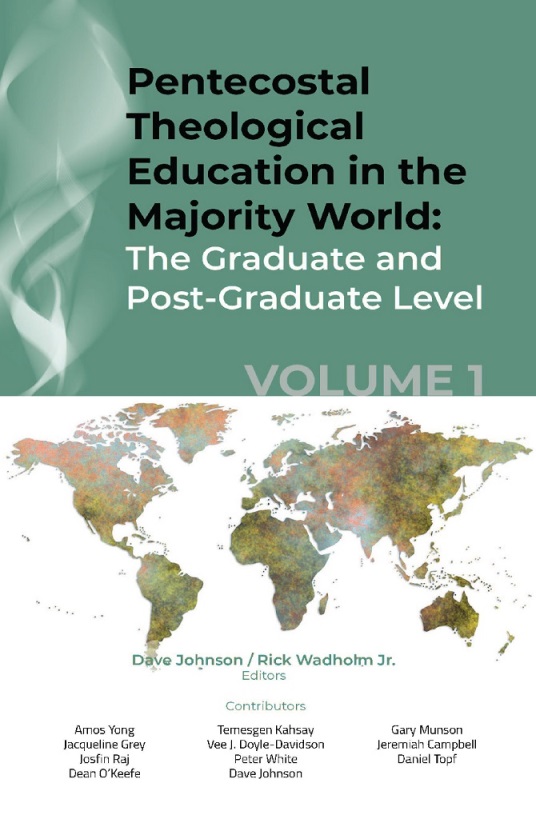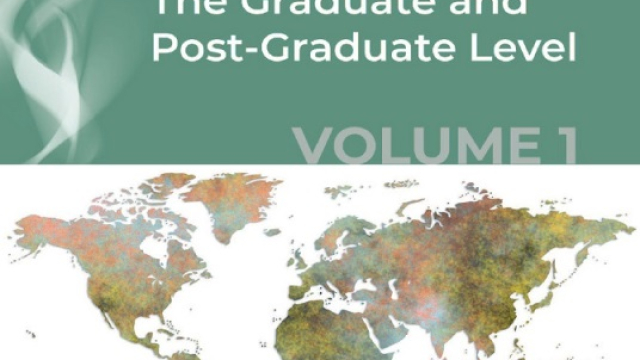Click to join the conversation with over 500,000 Pentecostal believers and scholars
Click to get our FREE MOBILE APP and stay connected
| PentecostalTheology.com



 Dave Johnson and Rick Wadholm Jr. eds., Pentecostal Theological Education in the Majority World: The Graduate and Post-Graduate Level, Volume 1 (Baguio City, Philippines: Asia Pacific Theological Seminary Press, 2022), 213 pages, ISBN 9789718942994.
Dave Johnson and Rick Wadholm Jr. eds., Pentecostal Theological Education in the Majority World: The Graduate and Post-Graduate Level, Volume 1 (Baguio City, Philippines: Asia Pacific Theological Seminary Press, 2022), 213 pages, ISBN 9789718942994.
The editors of this volume, Dave Johnson and Rick Wadholm Jr., are both Assemblies of God ministers. As the back cover of the book indicates Johnson is on the faculty of Asia Pacific Theological Seminary in the Philippines. Wadholm serves at the Assemblies of God Theological Seminary in Springfield, Missouri. Both men have experience in Pentecostal higher education, and both have served in an editorial capacity for a Pentecostal journal.
At the very beginning of the book Rick Wadholm Jr. states that the hope is that this book will be the first in a series (page 1). The plan is for a second volume that will focus on undergraduate Pentecostal Theological Education and a third that will focus on “non-formal theological education” (page 3). He also defines the meaning of key words in the title of the book and how they are used in its pages. The word “Pentecostal” refers to classical Pentecostals and others who are part of the global Spirit-empowered movement (page 2). “Theological Education” means not only the pursuit of academic theological study, but also of keeping missional practice in view (page 3). The term “Majority World” was used, at least in part, because it more fairly represents God’s work in the world and does not limit it to a particular section of the globe (pages 3-4)
In this book the editors have gathered together a number of writers to address the subject of Pentecostal Theological Education. After the introduction by Wadholm there are ten chapters, one written by each of the following contributors: Gary Munson, Vee J. Doyle-Davidson, Amos Yong, Dave Johnson, Josfin Raj, Daniel Topf, Peter White, Jeremiah Campbell, Temesgen Kahsay, and Dean D. O’Keefe with Jacqueline N. Grey. In the chapters they have written you will find information about Pentecostal Theological Education from Asia, Africa, and Latin America (page 4-5).
The editors have gathered together a number of writers to address the subject of Pentecostal theological education.
Pentecostal Theological Education in the Majority World is not an articulation of Pentecostal doctrines as they are presented in different places in the world. In the remainder of this review you get a better idea of the contents of this book. Though the text is not technical I would classify this book as more of an academic work than a popular one. A quick look at the table of contents reveals that the majority of the chapter titles are quite long. In the course of these chapters the writers address problems and challenges that Pentecostal Theological Education faces around the world.
For example, in the first chapter written by Gary Munson, he mentions the problem of international students who have been educated in the West having to transfer what they learned in the West to their own cultures when they return home (page 7). The author also speaks of the problem of transferring Western theological paradigms to other contexts in the world when starting theological schools in these other countries (pages 7-8). In addition, there is the imbalance of power between the northern church and the southern church with regard to finances, publishing, and other things (page 9). Munson also points out the fact that majority world cultures value biblical narratives more than Westerners do (pages 10-11).
At least in this book, “Theological Education” means not only the pursuit of academic theological study, but also of keeping missional practice in view.
Another challenge highlighted in the next chapter, which was written by Vee J. Doyle-Davidson, are the different perceptions of time (pages 28-30). Some students are more time conscious, and plan out how they want to use time, others are more event orientated (pages 28-30). Those in the first group are frustrated by interruptions, those in the second group are not (page 28). The author also deals with different ideas about communication, whether it is low context or high context (pages 30-32). Citing Moreau et al. Doyle-Davidson points out that in low context communication the message is contained in the words used (page 30-31), high context communication involves more than the words used, it also includes non-verbal communication (page 31). In chapter 3 written by Amos Yong, he speaks about keeping the missional focus in Pentecostal Theological Education (pages 51-53). Dave Johnson’s chapter addresses, among other things, the important issue of publishing with regard to Pentecostal Theological Education. The chapters by Josfin Raj, Peter White, and Jeremiah Campbell touch on issues such as the anti-intellectual mindset of some Pentecostals and the lack of, or substandard, theological educational institutions in some places. Substandard meaning schools that offer degrees without requiring a lot of research from their students (page 102), or schools that offer non-accredited degrees (page 143).
This book is an eye-opener, it can get readers to think about things that they might not normally consider. The fact is that, even in the Christian church, not everyone thinks, learns, or values everything in the same way that many of us in the West do. Knowing this in advance can help us as we seek to relate to, and offer Pentecostal Theological Education to people in, or from, other parts of the world. There is much to be learned in this volume. The one thing I wish were included in this book is a list of brief biographies of the contributors. I knew something about a few of the contributors, but I did not know all of them.
I would recommend this book to people who are interested in Global Christianity, missions, are considering becoming missionaries, or are missions’ executives. I think this book can help remove some of the hindrances in the educational process. I look forward to reading the other volumes in this series when they become available.
Reviewed by John Lathrop
Visit https://www.aptspress.org/ for a sample chapter.


